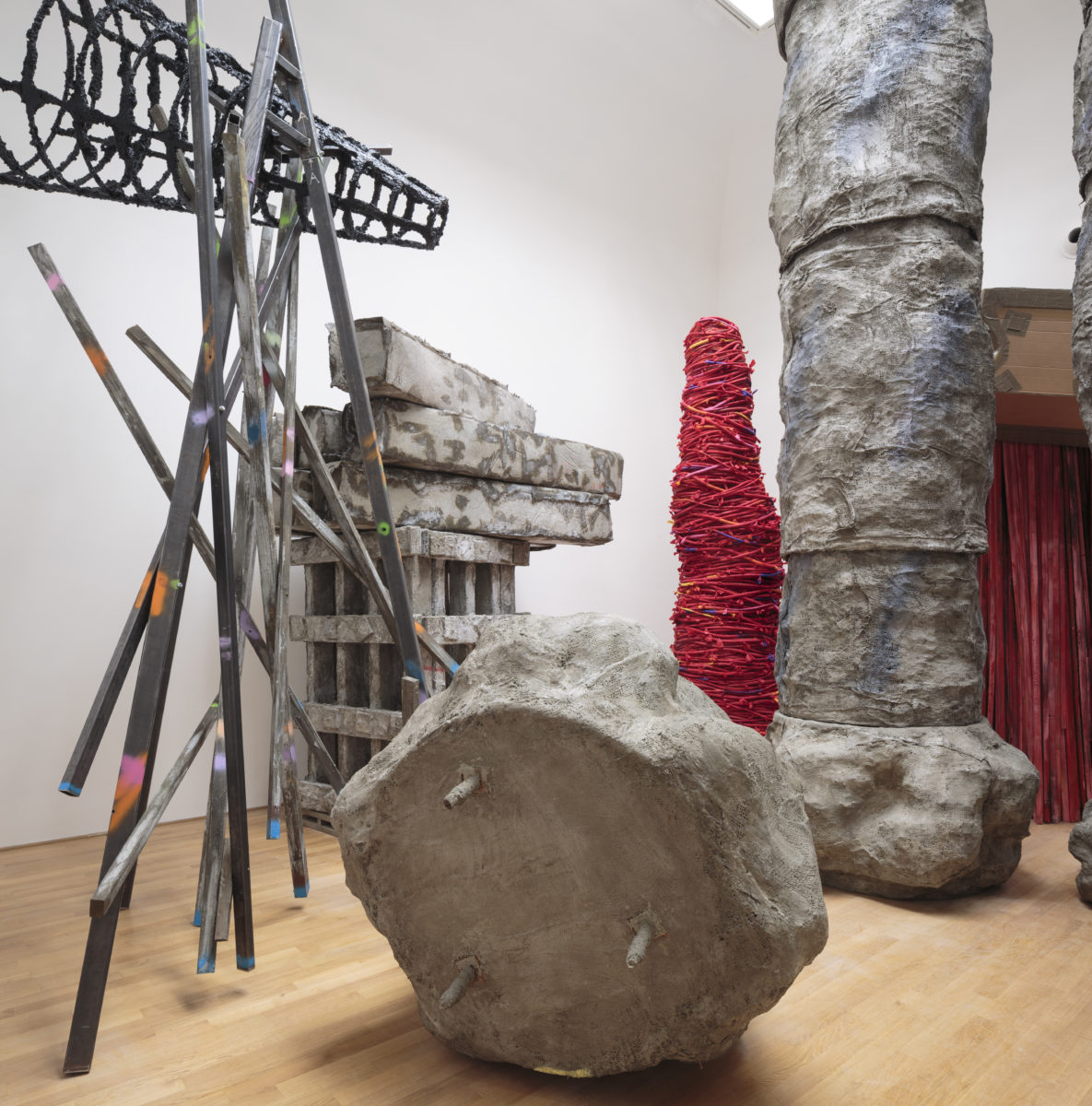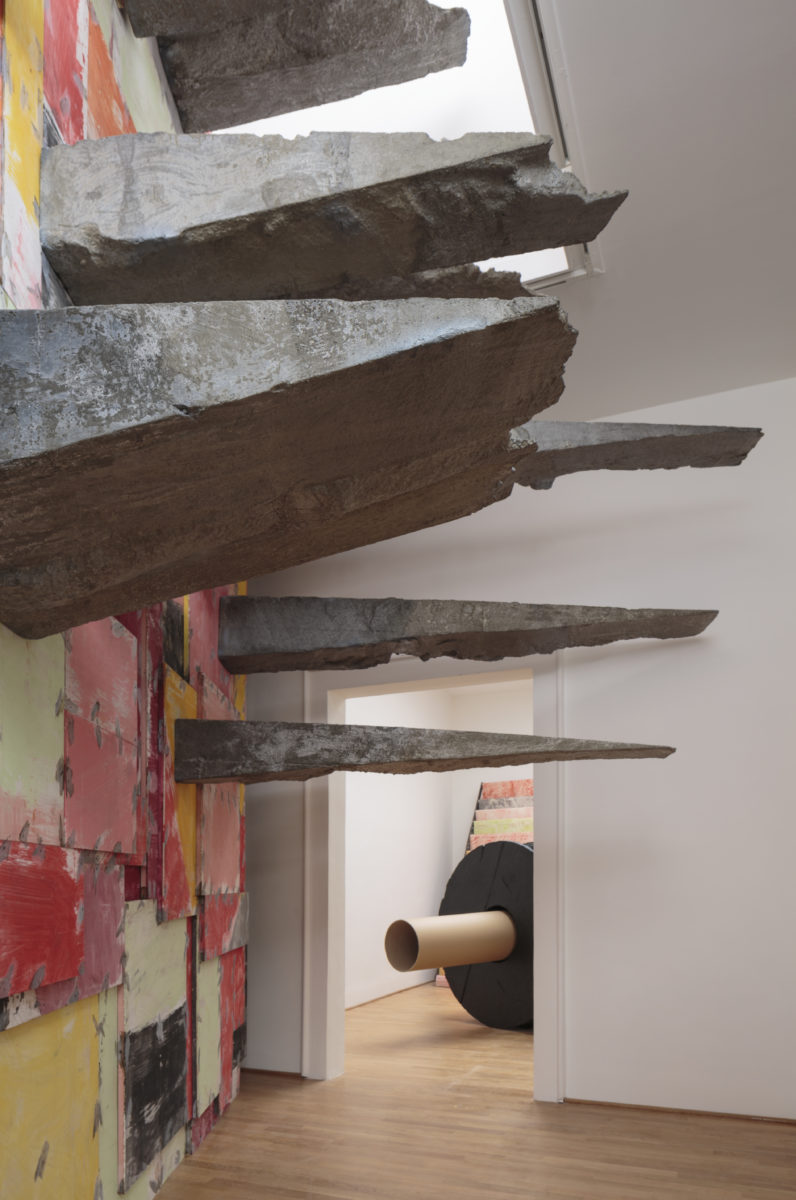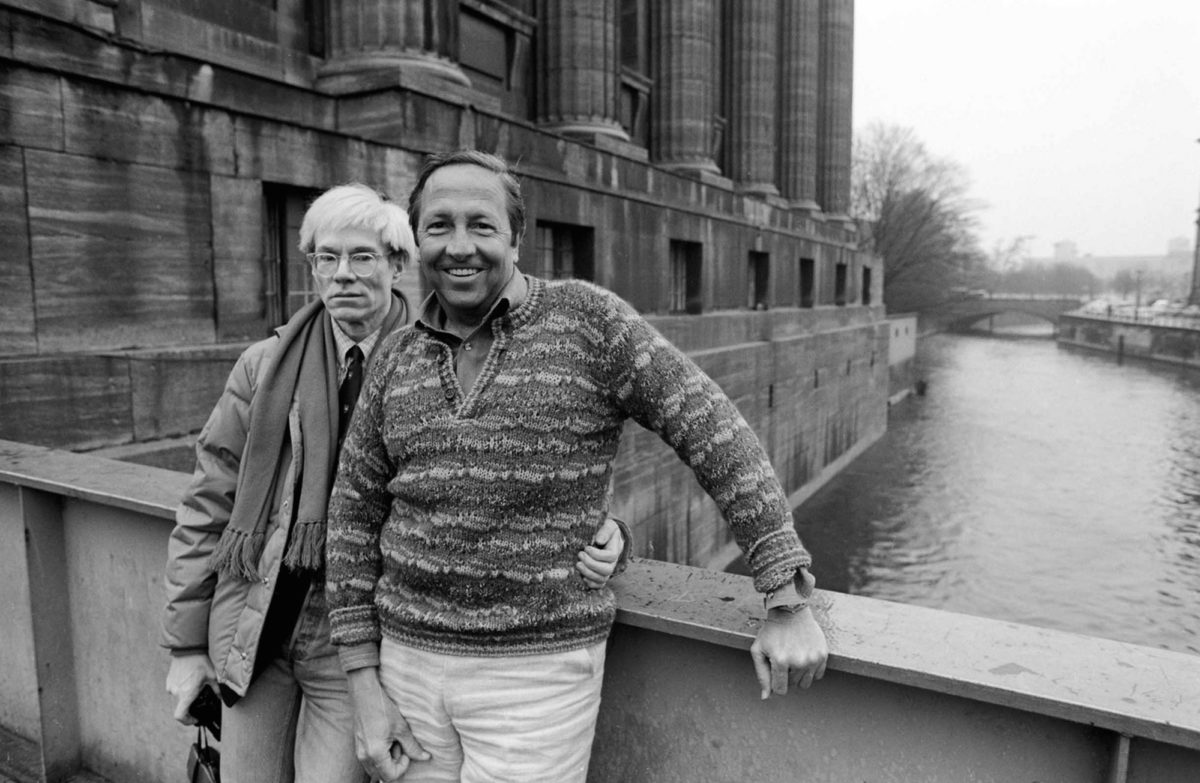Venice Biennale: Phyllida Barlow At The British Pavilion & Other Highlights
By Something CuratedThe Giardini is a diverse and explorative place that owes its dynamism to the presence of international participants and to the continual transformation of their borders. A sense of national identity remains strong among the pavilions, where the 57th edition of the Venice Biennale opens May 13, but in the city’s many palaces and villas–turned–exhibition spaces, multicultural exchange is the priority. Something Curated takes a closer look at some of the must-see presentations from this year’s Biennale and fringe exhibitions.
Phyllida Barlow || British Pavilion (13 May – 26 Nov)


The British Council presents folly, an ambitious sculptural installation by Phyllida Barlow conceived and created for the British Pavilion. Barlow’s extensive series of new works expands across the entire site; works are placed outside the building, spaces inside are bisected and disrupted, while other works reach up high into the roof and can only be glimpsed from below. The title of the exhibition suggests the themes that the artist explores, both here and in her wider sculptural practice: for example, the nature of a façade, the dualities of front and back, questions relating to the decorative, the deceitful, the theatrical, and the interplay of real and fake. Barlow herself has commented: “Making art is a political act. I have always believed that. It wrestles with beauty, fear, emotion. It doesn’t have a verbal language attached so it becomes a game. It’s feral in its existence. And we have to fathom it.”
Anne Imhof || German Pavilion (13 May – 26 Nov)
Artist Anne Imhof represents Germany in the 2017 Venice Biennale; the pavilion is curated by Susanne Pfeffer, director of the Fridericianum museum in Kassel. In a sculptural setting designed specifically for the space and the occasion, the new piece unfolds unseen compositions, elaborated together with the core members of Imhof’s team. “Faust” is both a five-hour production and a seven-month-long scenario comprised of performative dynamics, sculptural installations, painterly touches, and rigorously choreographed visual axes and movements that encompass the entire space.
Geoffrey Farmer || Canadian Pavilion (13 May – 26 Nov)
The National Gallery of Canada presents, with Kitty Scott, Carol and Morton Rapp, Curators of Modern and Contemporary Art at Art Gallery of Ontario, the work of artist Geoffrey Farmer. For his Canadian Pavilion at the 2017 Venice Biennale, Farmer once again returns to his interest in the relationship between people and their pictures. In an installation titled A way out of the mirror, he draws inspiration from a 1955 group of photographs showing a lumber truck that collided with a moving train. Farmer has a personal connection to the photographs: his grandfather, who would himself later die in an accident, was present when they were taken.
Mark Bradford || U.S. Pavilion (13 May – 26 Nov)
https://www.instagram.com/p/BT4Gf7PhEtE/?taken-at=241329687&hl=en
Mark Bradford’s exhibition for the U.S. Pavilion is born out of his longtime commitment to the inherently social nature of the material world we all inhabit. For Bradford, abstraction is not opposed to content; it embodies it. His selection of ordinary materials represents the hair salon, Home Depot, and the streets of Los Angeles—both the culture industry and the grey economy. Bradford renews the traditions of abstract and materialist painting, demonstrating that freedom from socially prescribed representation is profoundly meaningful in the hands of a black artist.
Kader Attia || Arsenale (13 May – 26 Nov)

French-Algerian artist Kader Attia is internationally recognised for a rigorous, research-based practice that he translates through a variety of media including photography, sculpture, installation and video. His work frequently reflects on the wide-ranging effects of colonialism, the repercussions of Western power on non-Western cultures and the physical and psychological impact of trauma and its aftermath, which Attia examines as a kind of “repair.” Expect these themes to be explored in his anticipated presentation opening later this week at the Arsenal.
Damien Hirst || Punta della Dogana & Palazzo Grassi (Until 3 Dec)
Treasures from the Wreck of the Unbelievable, a key fringe event during the Biennale, is the first major solo exhibition dedicated to Damien Hirst in Italy since the 2004 retrospective at the Museo Archeologico Nazionale in Naples, and is curated by Elena Geuna. The exhibition is displayed across 5,000 square meters of museum space and marks the first time that Palazzo Grassi and Punta della Dogana, the two Venetian venues of the Pinault Collection, are both dedicated to a single artist. Hirst’s most ambitious and complex project to date has been almost ten years in the making. Exceptional in scale and scope, the exhibition tells the story of the ancient wreck of a vast ship, the ‘Unbelievable’ (Apistos in the original Koine Greek), and presents what was discovered of its precious cargo.
Robert Rauschenberg & Andy Warhol || Cini Foundation (12 May – 27 Aug)

Running alongside the Biennale, the exhibition, “Us Silkscreeners…” takes the story of the very first silkscreen paintings by Rauschenberg and Warhol as its point of departure, namely Rauschenberg’s Renascence and Warhol’s Dollar Bills Series, both completed in 1962. In the spring of that same year a meeting between the two artists took place, which marked the beginning of a new direction in photo-transferring, that would not only impact the artist’s own career, but would also greatly influence the art scene at large.
Loris Gréaud || Campiello della Pescheria, Murano (11 May – 26 Nov)
In 1291, the Venetian Senate forced Venice’s glass blowers to settle on Murano island in order to protect the secrecy of glass-making processes. Each glass furnace on Murano has guarded its trade secrets ever since. The same applied to the Campiello della Pescheria glass furnace. Despite being shut down for the last 60 years, a strange atmosphere still prevails in this building which seems haunted by the memory of those who once occupied the place. Loris Gréaud, under the curation of Nicolas Bourriaud, brings the factory back to life for the seven-month duration of the 57th Venice Biennale. On this occasion, the former glass furnace will be revived, playing host to a new and unexpected production line.
Axel Vervoordt || Palazzo Fortuny (12 May – 27 Aug)
Axel Vervoordt, art collector and interior designer, co-curates his sixth and last exhibition at the Palazzo Fortuny with director Daniela Ferretti. The title this year is Intuition, and in accordance artists have been selected whose vision was driven by instinct and feeling, including Klee, Kandinsky and Surrealists such as Breton and Masson, who championed unconscious “automatic drawings”. In addition, a number of eminent contemporary artists have also developed site-specific installations in response to the spaces of Palazzo Fortuny.
James Lee Byars || Campo San Vio, Dorsoduro (13 May – 26 Nov)
https://www.instagram.com/p/BT3rPshgPyz/?tagged=jamesleebyars&hl=en
Towering over the Grand Canal, vaporettos and gondolas gliding past, is the late James Lee Byars’ ginormous work, The Golden Tower. Standing at over 20 metres high and entirely covered in gold gilt, the artwork was first envisaged by the American artist in 1976 as an enormous, glowing totem. Although the work was first exhibited in 1990 at the GegenwartEwigkeit exhibition at Martin-Gropius-Bau, Berlin, and in 2004 at Byars’ retrospective Life, Love and Death at the Schirn Kunsthalle in Frankfurt, this is the first time it has been realised as originally intended, installed in a public space.
Feature image: Installation view, folly, Phyllida Barlow, British Pavilion, Venice, 2017. Photo: Ruth Clark © British Council. Courtesy the artist and Hauser & Wirth